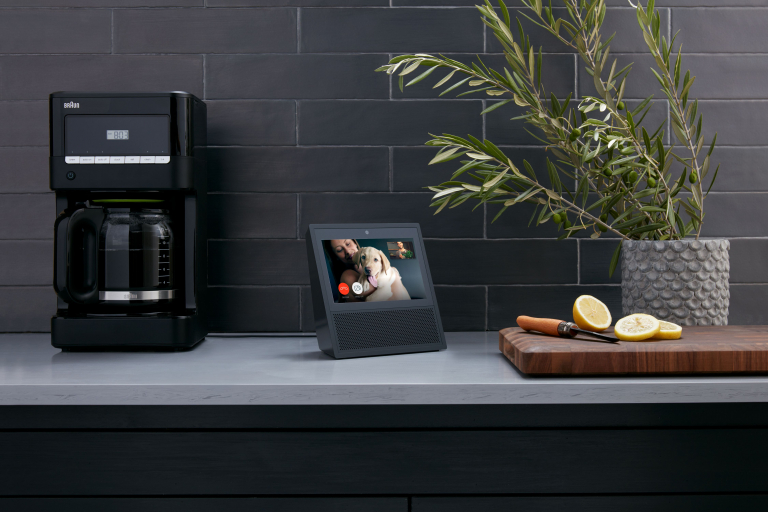
Amazon Echo Show. Image: Amazon via AFP Relaxnews
Smart speakers have introduced homes to voice-activated virtual assistants but will their lifespan be shortened by smart displays?
From toothbrushes to lightbulbs, fridges to garage doors, there’s almost nothing that can’t be remotely activated and controlled nowadays. While smartphones, tablets and wearables are the go-to devices for gadget enthusiasts who want to remotely control their homes, they’re not always convenient when users are already using them for other tasks.
Hence the need for alternative control hubs. Voice-activated virtual assistants are now incorporated into speakers and partnered with AI for smart televisions. The capabilities of smart speakers and voice-enabled virtual assistance — ordering food for delivery, giving directions, reading the news — are growing every day.
Some well-known examples of smart speakers include: Amazon Echo (Alexa), Sonos (Alexa), Google Home (Google Assistant), Apple HomePod (Siri) and the newly-announced Samsung Galaxy Home (Bixby).
As for smart televisions, most of the big brands (Samsung, Sony, LG) have a high-end series which includes AI-powered features able to control other home devices.
And now a new trend is emerging: the smart display, a home device with both a small screen and a speaker.
In general, getting a visual confirmation is a comfort. Many customers are opting for a display that allows for a quick glance at the route, restaurant or tickets the virtual assistant has selected. Even while listening to music, being able to scroll through a playlist or see album art is a bonus.
That’s why smart displays could very well replace smart speakers.
Convenient for multitasking as well as leaving smartphones free for texting or posting Instagram stories, the smart display has great potential for busy bodies. If in the kitchen cooking and listening to a playlist, a user could scroll through music, select a favourite tune, answer a video call, set a timer and then go back to the recipe.
Amazon Echo Show and Echo Spot were among the first such devices, with others such as JBL Link View and LG ThinQ WK9 demonstrating their capabilities at CES 2018.
As of now, Alexa and Google Assistant are leading the way. Just last week, in the United States, Lenovo launched the first of many Smart Displays with the Google Assistant, said to bring “the best of Google services, including Maps, YouTube, Calendar, Duo and Photos.”
Now the big question is, will Apple and Samsung’s offer brand fans a Siri- or Bixby-powered Smart Display? JB
RELATED STORIES:
Huawei teases ‘real upgrade’ for P20 Pro, Mate 20 Pro gets biggest battery yet